#but this is when i finally return home to powell lake! my first thought is to see min
Text


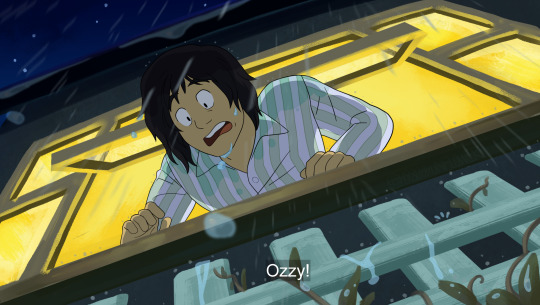
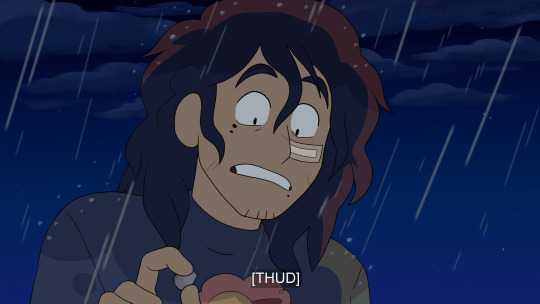
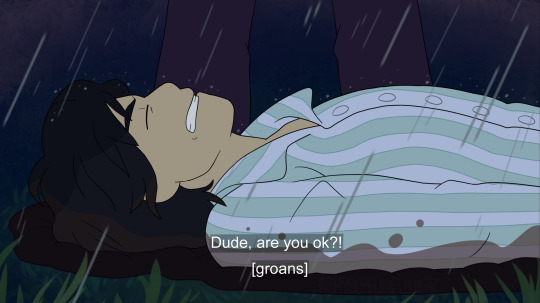
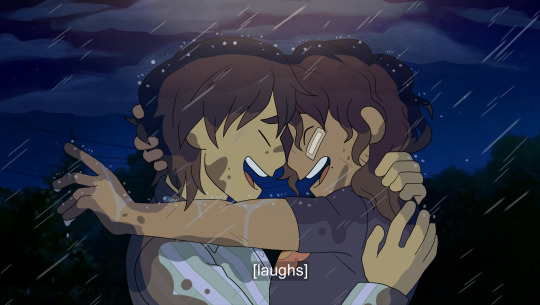
🏡💙So Good to See You!💛☔
#self shipping community#self ship#self ship art#poly self ship#oc x canon#self insert x canon#self insert art#f/o:💙hide in your shell🎹#ot3: ❤rhyme💛easy💙#s/i:💛spaceship superstar⭐#my art#sorry i took so long to finish this!#that second screenshot made me quit for a while cause the perspective frustrated me#please reblog! i put a lot of time into every little detail! and im very proud of the backgrounds <33#we never see mins house or anything so i didnt have anything to work w#im happy w what ive managed :-]#also sorry im posting the aftermath before the actual incident that caused the drift#at least for me and ryan which is what a lot of the plot revolves around#but this is when i finally return home to powell lake! my first thought is to see min#EDIT: BEFORE I POST I WANT TO MENTION THIS IS DRAFT NUMBER 202#!!!💖💙#im sure my babies are proud of me :"-]
194 notes
·
View notes
Link
This is an exemplary example of what happens when conflicting data is found in archaeology. No absurd or outlandish hypotheses, no close-mindedness, and no unwillingness to reassess initial conclusions if new evidence is found.
It started with a hiker who plucked two curious objects from a bit of scattered trash, a discovery that launched months of speculation and investigation.
Each wafer-thin bit of metal — one about the size of a quarter, the other a dime — bore strange inscriptions on either side, worn nearly smooth over time. The hiker tucked the coins into his pocket, promising himself to do a little detective work when he returned home.
Today, the mystery of how two ancient Spanish coins wound up near Lake Powell isn’t solved. Though it is a bit clearer.
Late last summer, a Colorado man hiking in the Halls Crossing area on the Utah side of Lake Powell noted something odd at his feet — two small, copper-colored discs that clearly were not part of the natural landscape.
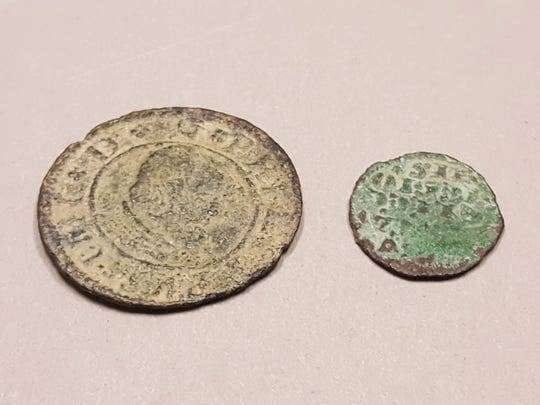
The coin on the left is a 16 marevedis, minted between 1662 and 1662. The other is a dinero, dating to the reign of Alfonso X (1252-1284). (Photo: National Park Service, Glen Canyon National Recreation Area)
He picked them up for a closer look. Coins, perhaps. And though their markings were barely distinguishable, two things were clear: They were very old, and they were not American.
The hiker, who prefers to remain anonymous, returned home with the objects and did some sleuthing. After researching them online, he reached out to the National Park Service to report his find: two Spanish coins that appeared to be centuries old.
Enter Brian Harmon, archaeologist for Glen Canyon National Recreation Area, in which the coins were found. His history-focused mind began to imagine ways such coins could have wound up in a now-dry part of a canyon that at one time was below the surface of Lake Powell.
But his first question was one of authenticity.
“Where he found them, the way he found them, I was skeptical at first,” Harmon said. Ancient coins don't suddenly appear in places they don't belong, especially in plain sight. “They’re just so unusual.”

The reverse sides of the two Spanish coins found near Lake Powell, starting an archaeological investigation. (Photo: National Park Service, Glen Canyon National Recreation Area)
The more he studied the detailed images of the coins, the more excited he became because there were only a handful of ways such coins could have found their way to his archaeological backyard.
Harmon’s initial thought was that they were brought by Spanish explorers. However, the coins — one believed to be from the 13th century, the other from the mid-1600s — predated by decades the first known Spanish presence in the area (the Dominguez and Escalante Expedition of 1776).
Harmon’s second theory, which he found much more tantalizing, was that the coins somehow found their way to Native Americans, who used them in trade.
“I really tried to keep my mind open,” Harmon said. “I was very excited. These aren’t the kinds of things I come across in the normal course of my job.”
Not long after Harmon finally got his hands on the coins in February, he reached out to experts to authenticate the find. Thanks to numismatists in Spain, Harmon learned that the larger coin is a 16 maravedis, dating to 1662-1664. The smaller coin is a dinero from the reign of Alfonso X, dated between 1252 and 1284.
In the meantime, Harmon sent colleagues to the spot where the hiker reported finding the coins. He told them to look for spots from which the coins may have eroded. Based on their ages, the coins should have been buried by layers of sediment. Perhaps they emerged from an alcove, or some other natural deposit.
“In archaeology, what the object is is just as important as where it is found,” Harmon said. “The location can tell us so much. Without that context, it’s almost impossible.”
The reports back from the site were disappointing. There were no clear points of origin, just bits of scattered trash, most likely from passing houseboats.
Then there was the coins' disparate dates. Harmon couldn’t bring himself to believe coins minted centuries apart could have wound up in the same hands, be they Spanish explorers or Native Americans.
That steered Harmon toward his most disappointing, and now likely, theory — that the coins were part of a modern collection that somehow wound up near Halls Crossing.
They most likely were dropped in the area anywhere from a few years to a few decades ago, Harmon said. While it makes little sense for someone to have brought the two coins to Lake Powell, then lose them somehow, it's the most plausible explanation, and one the archaeologist is sticking to until evidence is found to the contrary.
And unless someone comes forward to claim ownership, the coins will continue to sit in a climate-controlled environment in Page, where Glen Canyon National Recreation Area staff are based.
But Harmon is not declaring the mystery solved. He's not ready to completely rule out that the coins somehow came to the New World by the 17th or 18th centuries, perhaps eventually into the hands of Native Americans. It's an ongoing case, at least until someone steps forward with proof of ownership.
No one expects that to happen, given the coins' approximate valuation. Based on Google searches, similar Spanish coins in much better condition are worth no more than $50 or so.
Their value means nothing to Harmon.
“The true worth is discovery,” he said. “And this has been a fascinating story.”
#archaeology#glen canyon national recreation area#glen canyon#lake powell#spanish#coins#arizona#utah
54 notes
·
View notes
Text
Notes: Koepka has Tiger's vote for Player of the Year
New Post has been published on http://learntoplaygolftoday.com/golf-news/notes-koepka-has-tigers-vote-for-player-of-the-year/
Notes: Koepka has Tiger's vote for Player of the Year
PARAMUS, N.J. - Brooks Koepka already can count on one award this year. He has clinched the points-based award from the PGA of America as Player of the Year. Majors are worth 30 points, and there is a 50-point bonus for winning two of them. That gives Koepka 110 points for his U.S. Open and PGA Championship victories.
Even if Dustin Johnson, Justin Thomas or Bubba Watson wins all four FedEx Cup playoff events for seven titles this year, they would not catch Koepka.
The PGA Tour award is a vote of the players.
That's still up for grabs, though Tiger Woods thinks the race is over.
''You win two majors, you've got it,'' Woods said. ''It's not real complicated.''
Woods thought back to 1998, when David Duval won four times on the PGA Tour. The PGA Tour vote went to Mark O'Meara for his Masters and British Open titles.
''I think two majors trumps it,'' he said.
A QUICK TURN FOR THE BETTER
Stewart Cink enters the FedEx Cup playoffs at No. 58 in the standings, his best starting position since 2010. Thanks to a tie for fourth at the PGA Championship, he will return to the Masters for the first time in five years.
He would not have seen this coming three months ago.
''The main thing that happened was ... what you think are bad circumstances turn out to be good circumstances,'' Cink said.
Cink enjoys the late spring because he typically plays well on some of those courses, such as Colonial, Muirfield Village and Quail Hollow. Bad final rounds turned potential top 10s into middle-of-the-pack, if not lower. The final straw was Memorial, where he ended a streak of making the cut in 19 consecutive appearances.
''I felt like crap playing bad golf,'' Cink said. ''I had to have a little bit of something to wake me up. I didn't do anything new, I just recommitted to what I was working on the last year.''
That can be a tall order for a 45-year-old whose last victory was the 2009 British Open at Turnberry. Cink put in time with swing coach Mike Lipnick, and he started hitting the ball the way he envisioned the flight. Over the next two months, he had three top 5s - a runner-up at the Travelers Championship when he closed with a 62, and a tie for fourth at the St. Jude Classic and the PGA Championship.
The real test was at Bellerive, where he played in the raucous arena with Tiger Woods in the third round and matched his 66. In the mix at a major for longer than he can remember, Cink finished with two birdies for a 67 to tie for fourth.
''Being paired with Tiger helped me,'' Cink said. ''I was nervous playing with the Tiger. The crowd was a factor. It felt like a Ryder Cup. It was a great challenge, and I really wanted to embrace it and test myself and see how well I can hang in there. I didn't have the option to fall back into a comfort zone. There wouldn't have been one in that group. I'm proud of myself the way I played.''
Cink's five-year exemption to the Masters from his British Open victory ran out in 2014, when he shot 68 on Sunday and missed by one shot finishing in the top 12 to earn a trip back to Augusta National. He looks forward to going back.
But that's in April. Ahead of him is a chance to return home to East Lake for the Tour Championship for the first time since 2009.
''I'm super excited,'' he said. ''I have a better chance to go back to East Lake, and that's a goal from here on out to see if I can make it.''
More than recommitting to his golf, Cink said his heart is in the right place. The last two years have provided the ultimate test after his wife, Lisa, was diagnosed with late-stage breast cancer. He said her health has been steady - no setbacks - the last several months.
''It goes without saying that my life has taken on a different perspective,'' Cink said. ''I'm enjoying playing golf. I don't have anything to lose. I'm having fun competing, testing myself. There's no downside. ... I wish I could tell my 18-year-old self that.''
WRAPPING UP THE MAJORS
An obscure record was set at the PGA Championship. Seven players had all four rounds in the 60s, led by champion Brooks Koepka. The others were Stewart Cink, Jon Rahm, Francesco Molinari, Justin Thomas, Justin Rose and Webb Simpson.
The previous record was five players with all four rounds in the 60s at Baltusrol in 2016, Valhalla in 2014 and Riviera in 1995.
Koepka and Charl Schwartzel each shot 63 in the second round. That extended the streak to four consecutive years when at least one player shot 63 or better in the majors. Tommy Fleetwood also had a 63 at the U.S. Open, so that makes 2018 the fourth time there were at least three rounds of 63 in the same year. The other years were 1980 (Jack Nicklaus and Tom Weiskopf at the U.S. Open, Isao Aoki at the British); 1993 (Nick Faldo and Payne Stewart at the British, Vijay Singh at the PGA); and 2016 (Henrik Stenson and Phil Mickelson at the British, Robert Streb at the PGA).
Tiger Woods also got in on the act. His 64 in the final round at Bellerive tied for low score of the round. The last time no one had a lower score than Woods in one round at a major was in the 2010 U.S. Open at Pebble Beach, where he and Dustin Johnson each shot 66 on Saturday.
DIVOTS
Wake Forest junior Jennifer Kupcho has won the Mark H. McCormack Medal as the leading player in the 2018 world amateur golf ranking. The award gives Kupcho an exemption into the U.S. Women's Open and the Women's British Open provided she stays an amateur. ... Brooks Koepka, Justin Thomas and Justin Rose each have a mathematical chance to reach No. 1 in the world this week at The Northern Trust. ... The University of St. Andrews is honoring teaching pro Renee Powell and British journalist Katharine Whitehorn by naming a residence hall after each of them. Powell in 2008 became the first female golfer in the five centuries of St. Andrews to receive an honorary doctorate degree. ... Darren Clarke makes his PGA Tour Champions debut this week at the Boeing Classic outside Seattle.
STAT OF THE WEEK
Only two players outside the top 25 in the world have won majors in the last five years. Martin Kaymer was No. 28 when he won the 2014 U.S. Open at Pinehurst No. 2, and Jimmy Walker was No. 48 when he won the 2016 PGA Championship at Baltusrol.
FINAL WORD
''You don't want to be put on the bench in the playoffs.'' - Harris English, whose tie for 11th at the Wyndham Championship was narrowly enough for him to qualify for the FedEx Cup playoffs.
0 notes
Text
This is going to be kind of a crazy story. But it was fun living it. It all began with us wanting to see The Grand Canyon. There are two popular places to see it, the North Rim and the South Rim. The North Rim is about 2 hours from Southern Utah and the South Rim is about 6 hours from Southern Utah. So, of course, we wanted to see The Grand Canyon via the North Rim. And that is where our journey began.
On Saturday morning (March 11), we woke up, had some breakfast and we were going to try to maneuver our way to the northern side of The Grand Canyon. Shouldn’t be too hard. Right? Wrong! The Arizona Department of Transportation closes the road, State Road 67, to the North Entrance, until May, so you cannot enter the park even if the National Park Service kept that entrance open. However, we were told that there were many different dirt roads that led to The Grand Canyon. I looked at a map and thought I had found a route to get to Thunder Spring. So, we packed some food, an overnight change of clothes (just in case), a water jug and we were on our way.
We made our way into Arizona and headed toward Fredonia. Just outside of Fredonia, on US Route Alt 89, you can reach the Kaibab National Forest. The plan was to take National Forest Road 422a to Ryan Road and onto a few other dirt roads until we made it to Thunder Road, which would take us there. We made it to the Kaibab National Forest in the early afternoon and had plenty of sunshine and clear skies. We made it down 422a to Ryan Road and continued back onto 422a. We made it miles into the interior and past Big Springs Cabin (about the 1/2 way point).
That is when we ran into it. The dirt road was completely covered in ice and some snow. I saw some uncovered dirt road ahead, so we put Ebony into 4WD and made a run at it. We cruised through without an issue. Then we came to a part of the road that was uphill, sloped towards a drop off with no guard rail and covered in ice. The danger was too great so we turned around.
It was at that point that I said,”Well…we didn’t get to see The Grand Canyon and I still want to see it.” So I said, “South Rim?” I looked around the car and got nods from all of my fellow Nomads. Off to the South Rim we went. The route actually took us through a place called Marble Canyon, located upstream from The Grand Canyon on the Colorado River. The scenery up to this point was so beautiful.
We continued southward until we reached Cameron. This is the city that is at the junction of the road that leads to the Eastern Entrance of The Grand Canyon National Park. It was dark and we decided to stop, grab some dinner and find a hotel room for the night. There was only one motel in Cameron and it was booked full. I called a few of the ones inside The Grand Canyon Village (in the park). They had one available for $481 for one night. We passed on that one. Every hotel I called in Flagstaff, an hour away, was booked. We finally found one in Tuba City on the Navajo Reservation, about 30 minutes away, for $100 per night per room. We were tired and that was in the range of expectation.
We headed to Tuba City, checked in, and got some rest. The next morning, bright and early, we headed to The Grand Canyon. We took State Road 64 to the East Entrance. Not too far inside the East Entrance we came to the Desert View Watchtower, a 70 foot stone building right on the South Rim of The Grand Canyon. If you go up to the top, you will get some spectacular views of The Grand Canyon. Oddly enough, there were not many people there.
We continued onward towards Grand Canyon Village. Along the way there were multiple pull offs and lookouts. We pulled into every one and explored. Most only had a few people and we were able to see a multitude of different angles of the canyon. At one point, we actually saw a spot where the Colorado River had eroded all of the soil and rock down to the actual plate of the Earth’s crust!
The last lookout we came to was Grandview. The parking lot was completely full. We had to circle twice before finding a spot. This particular place seemed crowded because it was the first place you could park and hike down to the canyon floor. We opted not to do this because it took about 6 to 8 hours to reach the bottom and then 6 to 8 hours to come back up. We were not prepared for that kind of hike. After a little exploring around the rim, we headed to the visitor’s center that was towards the village. The place was completely packed! We used the rest room and got out of there.
We knew that the crowds would only get worse from there, so we decided to head on out of the park. We had explored The Grand Canyon for hours and were completely satisfied with our experience. So, we hit the road and headed back towards home base. However, we took a different way back.
The return route took us through Page, Arizona. This is the location of the Famous Horseshoe Bend just south of Lake Powell. For those of you who are unaware, this is a place in the Colorado River where the river does a 180 degree bend to form, what looks like, a horseshoe. You can access it by boat from Lake Powell. Or, you can pull off of US Route 89 to see it from the cliffs above. This is what we did.
The pull off has paved parking and outhouse style bathrooms. From the parking area, it is a 1.5 mile hike, round trip, to get to the steep cliff overlook. The entire way there is fairly sandy and, with the exception of having to hike up a steep hill there and back, the hike was rather easy. We arrived at the overlook at it was magnificent. We had never seen a river do this. And, we were 1000 feet above it to view it. The boats in the river looked like floating pieces of rice, they were so small.
One word of caution, there can be quite a few people around. There are no guard rails. And if someone is careless around you and you are not aware, you may get knocked off-balance if you are too close to the edge. So, please proceed with caution. We found that if you hike about 50 yards to the left of where everyone is, there are no crowds and the view is still great.
From here we headed straight for home base. We were beat from driving for two straight days and from hiking around all of the landscapes we encountered. What started as a simple couple hour scouting expedition to find a dirt road access to the North Rim led us into a 2 day long jaunt covering hundreds of miles. But, boy was it fun. Safe Travels.
The Grand Canyon This is going to be kind of a crazy story. But it was fun living it. It all began with us wanting to see The Grand Canyon.
#arizona#cameron#colorado river#desert view watchtower#fredonia#grand canyon#horseshoe bend#kaibab national park#thunder spring#tuba city
0 notes